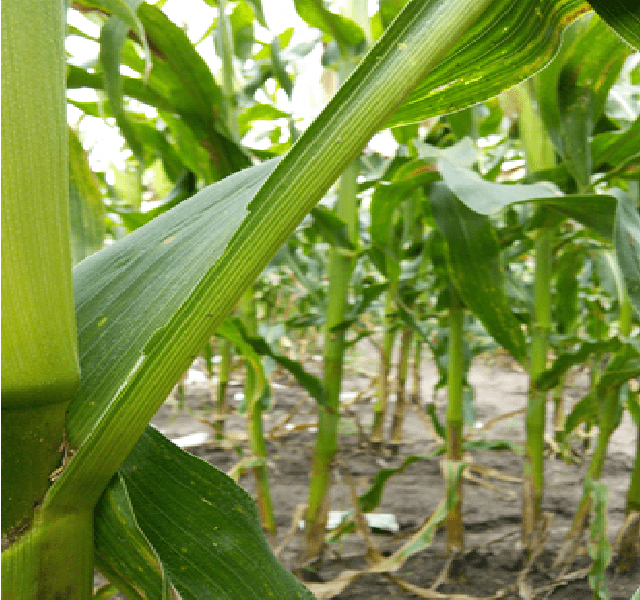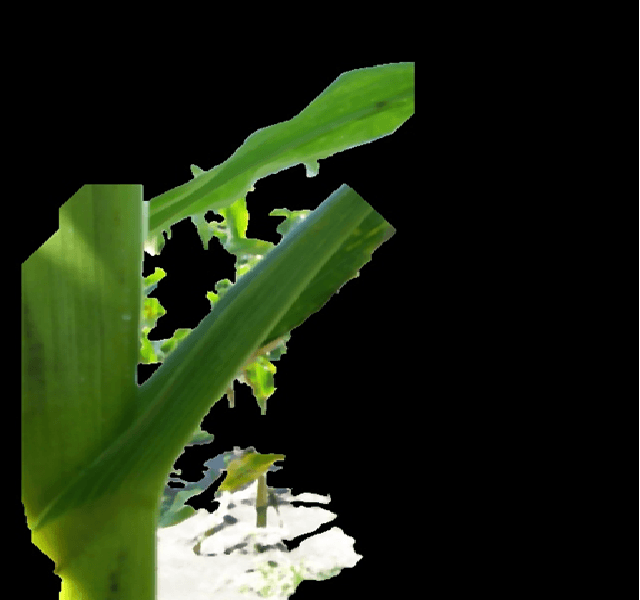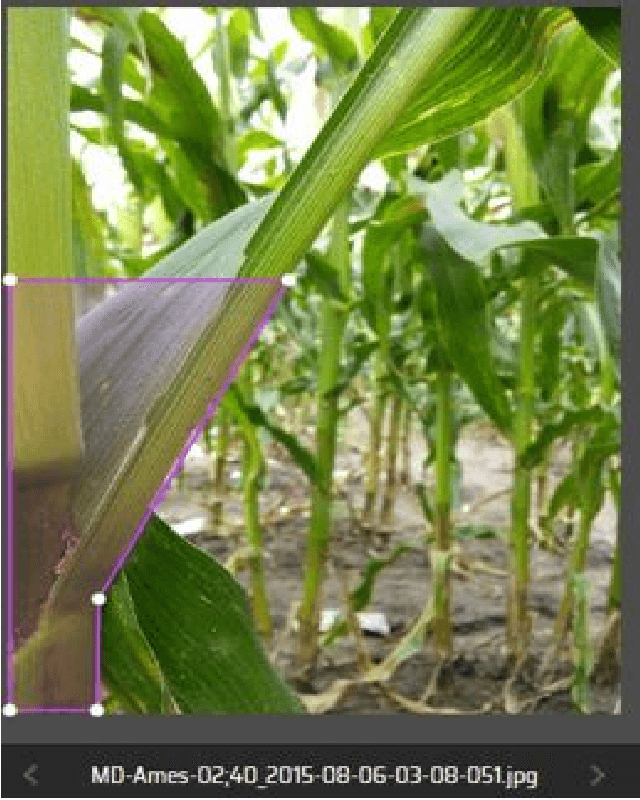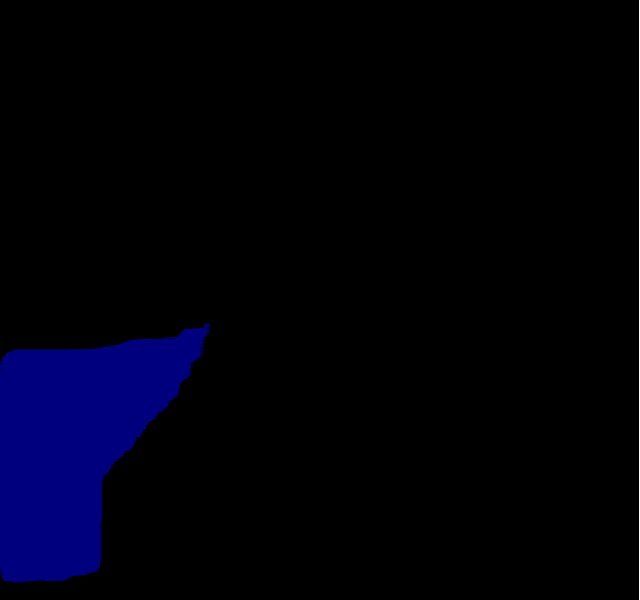Prapti Thapaliya
Leaf Angle Estimation using Mask R-CNN and LETR Vision Transformer
Aug 01, 2024



Abstract:Modern day studies show a high degree of correlation between high yielding crop varieties and plants with upright leaf angles. It is observed that plants with upright leaf angles intercept more light than those without upright leaf angles, leading to a higher rate of photosynthesis. Plant scientists and breeders benefit from tools that can directly measure plant parameters in the field i.e. on-site phenotyping. The estimation of leaf angles by manual means in a field setting is tedious and cumbersome. We mitigate the tedium using a combination of the Mask R-CNN instance segmentation neural network, and Line Segment Transformer (LETR), a vision transformer. The proposed Computer Vision (CV) pipeline is applied on two image datasets, Summer 2015-Ames ULA and Summer 2015- Ames MLA, with a combined total of 1,827 plant images collected in the field using FieldBook, an Android application aimed at on-site phenotyping. The leaf angles estimated by the proposed pipeline on the image datasets are compared to two independent manual measurements using ImageJ, a Java-based image processing program developed at the National Institutes of Health and the Laboratory for Optical and Computational Instrumentation. The results, when compared for similarity using the Cosine Similarity measure, exhibit 0.98 similarity scores on both independent measurements of Summer 2015-Ames ULA and Summer 2015-Ames MLA image datasets, demonstrating the feasibility of the proposed pipeline for on-site measurement of leaf angles.
Seed Kernel Counting using Domain Randomization and Object Tracking Neural Networks
Aug 10, 2023Abstract:High-throughput phenotyping (HTP) of seeds, also known as seed phenotyping, is the comprehensive assessment of complex seed traits such as growth, development, tolerance, resistance, ecology, yield, and the measurement of parameters that form more complex traits. One of the key aspects of seed phenotyping is cereal yield estimation that the seed production industry relies upon to conduct their business. While mechanized seed kernel counters are available in the market currently, they are often priced high and sometimes outside the range of small scale seed production firms' affordability. The development of object tracking neural network models such as You Only Look Once (YOLO) enables computer scientists to design algorithms that can estimate cereal yield inexpensively. The key bottleneck with neural network models is that they require a plethora of labelled training data before they can be put to task. We demonstrate that the use of synthetic imagery serves as a feasible substitute to train neural networks for object tracking that includes the tasks of object classification and detection. Furthermore, we propose a seed kernel counter that uses a low-cost mechanical hopper, trained YOLOv8 neural network model, and object tracking algorithms on StrongSORT and ByteTrack to estimate cereal yield from videos. The experiment yields a seed kernel count with an accuracy of 95.2\% and 93.2\% for Soy and Wheat respectively using the StrongSORT algorithm, and an accuray of 96.8\% and 92.4\% for Soy and Wheat respectively using the ByteTrack algorithm.
 Add to Chrome
Add to Chrome Add to Firefox
Add to Firefox Add to Edge
Add to Edge